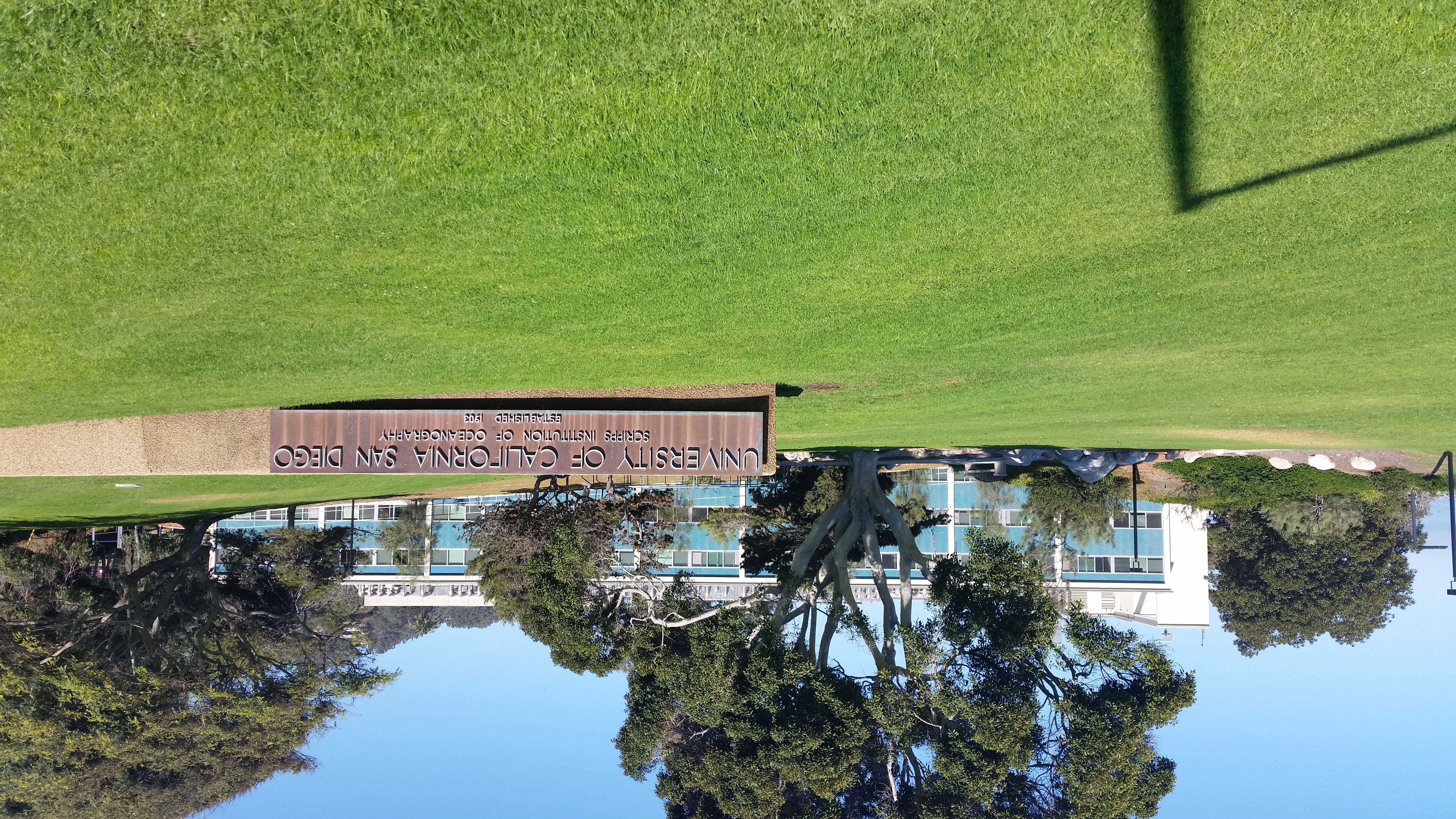|
Storage Resource Broker
Storage Resource Broker (SRB) is data grid management computer software used in computational science research projects. SRB is a logical distributed file system based on a client-server architecture which presents users with a single global logical namespace or file hierarchy. Essentially, the software enables a user to use a single mechanism to work with multiple data sources. Description SRB provides a uniform interface to heterogeneous computer data storage resources over a network. As part of this, it implements a logical namespace (distinct from physical file names) and maintains metadata on data-objects (files), users, groups, resources, collections, and other items in an SRB metadata catalog (MCAT) stored in a relational database management system. (Reprint from November 30 – December 3, 1998) System and user-defined metadata can be queried to locate files based on attributes as well as by name. SRB runs on various versions of Unix, Linux, and Microsoft Windows. The ... [...More Info...] [...Related Items...] OR: [Wikipedia] [Google] [Baidu] [Amazon] |
|
|
Data Grid
A data grid is an architecture or set of services that allows users to access, modify and transfer extremely large amounts of geographically distributed data for research purposes. Data grids make this possible through a host of middleware Application software, applications and Service (systems architecture), services that pull together data and Resource (computer science), resources from multiple administrative domains and then present it to users upon request. The data in a data grid can be located at a single site or multiple sites where each site can be its own administrative domain governed by a set of security restrictions as to who may access the data. Likewise, multiple replicas of the data may be distributed throughout the grid outside their original administrative domain and the security restrictions placed on the original data for who may access it must be equally applied to the replicas. Specifically developed data grid middleware is what handles the integration betwee ... [...More Info...] [...Related Items...] OR: [Wikipedia] [Google] [Baidu] [Amazon] |
|
|
Grid Computing
Grid computing is the use of widely distributed computer resources to reach a common goal. A computing grid can be thought of as a distributed system with non-interactive workloads that involve many files. Grid computing is distinguished from conventional high-performance computing systems such as cluster computing in that grid computers have each node set to perform a different task/application. Grid computers also tend to be more heterogeneous and geographically dispersed (thus not physically coupled) than cluster computers. Although a single grid can be dedicated to a particular application, commonly a grid is used for a variety of purposes. Grids are often constructed with general-purpose grid middleware software libraries. Grid sizes can be quite large. Grids are a form of distributed computing composed of many networked loosely coupled computers acting together to perform large tasks. For certain applications, distributed or grid computing can be seen as a special ... [...More Info...] [...Related Items...] OR: [Wikipedia] [Google] [Baidu] [Amazon] |
|
 |
US Patent And Trademark Office
The United States Patent and Trademark Office (USPTO) is an agency in the U.S. Department of Commerce that serves as the national patent office and trademark registration authority for the United States. The USPTO's headquarters are in Alexandria, Virginia, after a 2005 move from the Crystal City area of neighboring Arlington, Virginia. The USPTO is "unique among federal agencies because it operates solely on fees collected by its users, and not on taxpayer dollars". Its "operating structure is like a business in that it receives requests for services—applications for patents and trademark registrations—and charges fees projected to cover the cost of performing the services tprovide . The office is headed by the under secretary of commerce for intellectual property and director of the United States Patent and Trademark Office. , Coke Morgan Stewart is acting undersecretary and director, having been appointed to the position by President Trump on January 20. The USP ... [...More Info...] [...Related Items...] OR: [Wikipedia] [Google] [Baidu] [Amazon] |
 |
DARPA
The Defense Advanced Research Projects Agency (DARPA) is a research and development agency of the United States Department of Defense responsible for the development of emerging technologies for use by the military. Originally known as the Advanced Research Projects Agency (ARPA), the agency was created on February 7, 1958, by President Dwight D. Eisenhower in response to the Soviet Union, Soviet launching of Sputnik 1 in 1957. By collaborating with academia, industry, and government partners, DARPA formulates and executes research and development projects to expand the frontiers of technology and science, often beyond immediate U.S. military requirements.Dwight D. Eisenhower and Science & Technology, (2008). Dwight D. Eisenhower Memorial CommissionSource The name of the organization first changed from its founding name, ARPA, to DARPA, in March 1972, changing back to ARPA in February 1993, then reverted to DARPA in March 1996. ''The Economist'' has called DARPA "the agency that ... [...More Info...] [...Related Items...] OR: [Wikipedia] [Google] [Baidu] [Amazon] |
|
National Science Foundation
The U.S. National Science Foundation (NSF) is an Independent agencies of the United States government#Examples of independent agencies, independent agency of the Federal government of the United States, United States federal government that supports fundamental research and education in all the non-medical fields of science and engineering. Its medical counterpart is the National Institutes of Health. With an annual budget of about $9.9 billion (fiscal year 2023), the NSF funds approximately 25% of all federally supported basic research conducted by the List of American institutions of higher education, United States' colleges and universities. In some fields, such as mathematics, computer science, economics, and the social sciences, the NSF is the major source of federal backing. NSF's director and deputy director are appointed by the president of the United States and Advice and consent, confirmed by the United States Senate, whereas the 24 president-appointed members of the ... [...More Info...] [...Related Items...] OR: [Wikipedia] [Google] [Baidu] [Amazon] |
|
 |
University Of California, San Diego
The University of California, San Diego (UC San Diego in communications material, formerly and colloquially UCSD) is a public university, public Land-grant university, land-grant research university in San Diego, California, United States. Established in 1960 near the pre-existing Scripps Institution of Oceanography in La Jolla, UC San Diego is the southernmost of the ten campuses of the University of California. It offers over 200 undergraduate and graduate degree programs, enrolling 33,096 undergraduate and 9,872 graduate students, with the second largest student housing capacity in the nation. The university occupies near the Pacific coast. UC San Diego consists of 12 undergraduate, graduate, and professional schools as well as 8 undergraduate residential colleges. The university operates 19 organized research units as well as 8 School of Medicine research units, 6 research centers at Scripps Institution of Oceanography, and 2 multi-campus initiatives. UC San Diego is als ... [...More Info...] [...Related Items...] OR: [Wikipedia] [Google] [Baidu] [Amazon] |
 |
San Diego Supercomputer Center
The San Diego Supercomputer Center (SDSC) is an organized research unit of the University of California, San Diego. Founded in 1985, it was one of the five original NSF supercomputing centers. Its research pursuits are high performance computing, grid computing, computational biology, geoinformatics, computational physics, computational chemistry, data management, scientific visualization, cyberinfrastructure, and computer networking. SDSC computational biosciences contributions and earth science and genomics computational approaches are internationally recognized. The current SDSC director is Frank Würthwein, Ph.D., UC San Diego physics professor and a founding faculty member of the Halıcıoğlu Data Science Institute of UC San Diego. Würthwein assumed the role in July 2021. He succeeded Michael L. Norman, also a physics professor at UC San Diego, and who was the SDSC director since September 2010. Divisions and projects SDSC roles include creating and maintaining the Pro ... [...More Info...] [...Related Items...] OR: [Wikipedia] [Google] [Baidu] [Amazon] |
 |
General Atomics
General Atomics (GA) is an American energy and defense corporation headquartered in San Diego, California, that specializes in research and technology development. This includes physics research in support of nuclear fission and nuclear fusion energy. The company also provides research and manufacturing services for remotely operated surveillance aircraft, including its MQ-1 Predator drones, airborne sensors, and advanced electric, electronic, wireless, and laser technologies. History General Atomics was founded on July 18, 1955, in San Diego, California, by Frederic de Hoffmann with assistance from notable physicists Edward Teller and Freeman Dyson. The company was originally part of the General Atomic division of General Dynamics "for harnessing the power of nuclear technologies". GA's first offices were in the General Dynamics facility on Hancock Street in San Diego. GA also used a schoolhouse on San Diego's Barnard Street as its temporary headquarters, which it would l ... [...More Info...] [...Related Items...] OR: [Wikipedia] [Google] [Baidu] [Amazon] |
|
Nirvana (software)
Nirvana was virtual object storage software developed and maintained by General Atomics. It can also be described as metadata, data placement and data management software that lets organizations manage unstructured data on multiple storage devices located anywhere in the world in order to orchestrate global data intensive workflows, and search for and locate data no matter where it is located or when it was created. Nirvana does this by capturing system and user-defined metadata to enable detailed search and enact policies to control data movement and protection. Nirvana also maintains data provenance, audit, security and access control. Nirvana can reduce storage costs by identifying data to be moved to lower cost storage and data that no longer needs to be stored. History Nirvana is the result of research started in 1995 at the San Diego Supercomputer Center (SDSC) (which was founded by and run at the time by General Atomics), in response to a DARPA sponsored project for a Mas ... [...More Info...] [...Related Items...] OR: [Wikipedia] [Google] [Baidu] [Amazon] |
|
|
Binary Large Object
Object storage (also known as object-based storage or blob storage) is a computer data storage approach that manages data as "blobs" or "objects", as opposed to other storage architectures like file systems, which manage data as a file hierarchy, and block storage, which manages data as blocks within sectors and tracks. Each object is typically associated with a variable amount of metadata, and a globally unique identifier. Object storage can be implemented at multiple levels, including the device level (object-storage device), the system level, and the interface level. In each case, object storage seeks to enable capabilities not addressed by other storage architectures, like interfaces that are directly programmable by the application, a namespace that can span multiple instances of physical hardware, and data-management functions like data replication and data distribution at object-level granularity. Object storage systems allow retention of massive amounts of unstructured data ... [...More Info...] [...Related Items...] OR: [Wikipedia] [Google] [Baidu] [Amazon] |
|
|
High Performance Storage System
High Performance Storage System (HPSS) is a flexible, scalable, policy-based, software-defined hierarchical storage management (HSM) product developed by the HPSS Collaboration. It provides scalable HSM, archive, and file system services using cluster, LAN and storage area network (SAN) technologies to aggregate the capacity and performance of many computers, disks, disk systems, tape drives, and tape libraries. Architecture HPSS supports a variety of methods for accessing and creating data. Among them are support for FTP, parallel FTP, FUSE (Linux), as well as a robust client API with support for parallel I/O. As of version 7.5, HPSS has full support on Linux. The HPSS client API is supported on AIX, Linux, and Solaris. The implementation is built around IBM's Db2, a scalable relational database management system. The HPSS Collaboration In early 1992, several United States Department of Energy (DOE) National Laboratories — Lawrence Livermore (LLNL), Los Alamos ... [...More Info...] [...Related Items...] OR: [Wikipedia] [Google] [Baidu] [Amazon] |
|
 |
Authentication
Authentication (from ''authentikos'', "real, genuine", from αὐθέντης ''authentes'', "author") is the act of proving an Logical assertion, assertion, such as the Digital identity, identity of a computer system user. In contrast with identification, the act of indicating a person or thing's identity, authentication is the process of verifying that identity. Authentication is relevant to multiple fields. In art, antiques, and anthropology, a common problem is verifying that a given artifact was produced by a certain person, or in a certain place (i.e. to assert that it is not counterfeit), or in a given period of history (e.g. by determining the age via carbon dating). In computer science, verifying a user's identity is often required to allow access to confidential data or systems. It might involve validating personal identity documents. In art, antiques and anthropology Authentication can be considered to be of three types: The ''first'' type of authentication is accep ... [...More Info...] [...Related Items...] OR: [Wikipedia] [Google] [Baidu] [Amazon] |